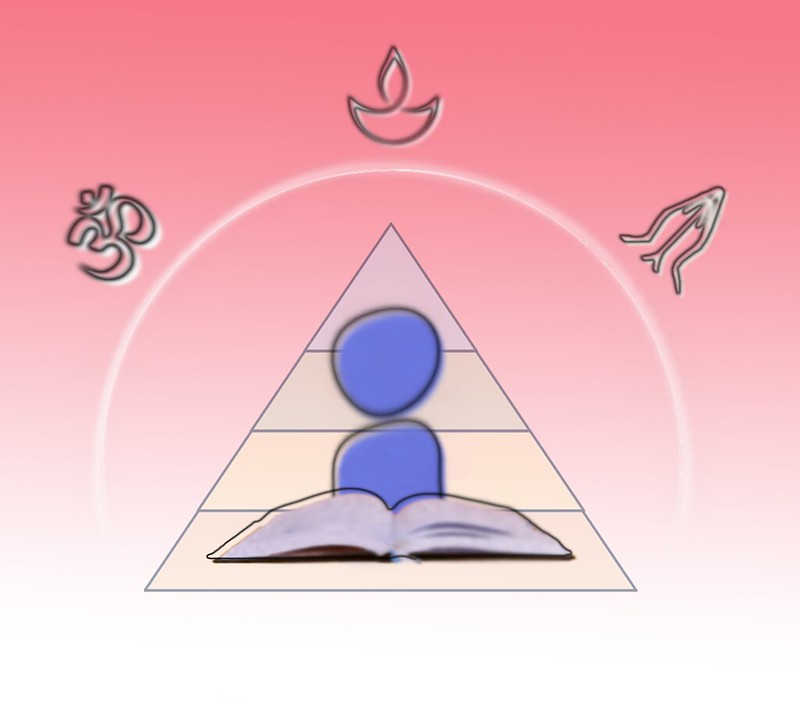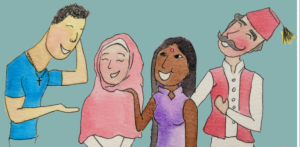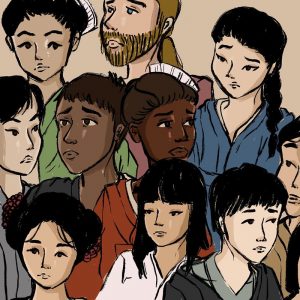Hinduism remains misrepresented in academia despite protests
A number of Hindus have protested against their representation in the academia and advocate for fair treatment.
May 28, 2021
As an American Hindu growing up in the United States, my faith and my identity have gone hand in hand. Living in San Ramon, and seeing hundreds of other kids who are like me has definitely helped me feel comfortable in my own skin. Despite this, I have experienced discrimination simply for being a Hindu. From stereotypical taunts such as “cow piss drinker” to being told my faith is inferior, these incidents are common for Hindu students. When looking deeper, we see that American institutions are in part responsible for this treatment of Hindu students. From professors to textbooks, we see that these incidences aren’t a one-off event, rather a consistent theme. This discrimination against Hindus within institutions in the country, or Hinduphobia, is prevalent and affects Hindus in their personal, academic, and professional lives.
Hindu history in America has been marred with hate crimes and discrimination. For instance, the Dotbusters gang of the late 20th century targeted Hindus in New Jersey and New York for their religious beliefs. This generated the term “dotbusters” which refers to the red vermilion dot that Hindu women traditionally wear on their foreheads. This forced the New Jersey legislature to pass stricter bills to counter these events, but since then, no other state has passed bills or laws explicitly mentioning discrimination against Hindus and their protection.
Despite hate crimes against Hindus decreasing over the past years, discrimination against Hindus has been prevalent in the country’s academia. One such case is that of Rutgers University’s professor of South Asian studies, Audrey Truschke. Truschke has previously made many controversial statements and been accused of gaslighting Hindus. For example, in a now-deleted tweet, Truschke compared Rama, one of the most revered gods in Hinduism, to a “misogynistic pig” and “uncouth.” Robert Goldman, the translator of the Ramayana that Truschke quotes, denied this meaning, saying, “Neither the great poet (Valmiki) nor we have used such a vulgar diction and certainly, Sita would never have used such language to her husband even in the midst of emotional distress.” Although Truschke later retracted the statement and attempted to defend herself, the damage had already been done.
As for gaslighting, Truschke has often romanticized the Mughal ruler, Aurangzeb. Accused of conducting acts of atrocities against Hindus, from destroying temples to instituting taxes such as the jizya tax, history has shown that Aurangzeb was a tyrant, to say the least. Truschke justified these acts by simply saying that “Aurangzeb was a man of his times, not ours.”
Additionally, Truschke has trivialized the killings of Hindus done by Aurangzeb, saying that “such numbers are often exaggerated as there was really no way of knowing how many people existed in India at that time, and that people of that time made up numbers!” This comes in the face of this New York Times report, suggesting that Aurangzeb was responsible for the killing of close to 4.6 million Hindus. Additionally, first-hand reports such as that of Francois Gautier, Aurangzeb’s personal physician, have described Aurangzeb’s atrocities against Hindus.
This matter is not limited to Hindus. By rationalizing Aurangzeb’s actions, Truschke also ignores atrocities committed against minorities such as the Sikhs. For example, Aurangzeb was responsible for the killing of the 9th Guru of the Sikhs, Guru Tegh Bahadur, and the killing of the children of the 10th Guru of the Sikhs.
Although it is certainly necessary to acknowledge the circumstances surrounding our history, glorifying and sympathizing with historical figures who have committed atrocities like Aurangzeb erases the importance of holding historical figures accountable for their actions.
These statements from Truschke have led student-led Hindu organizations to call for Rutgers to limit her teachings. A petition to Rutgers University has amassed close to 5,000 signatures and over 50 student-led organizations that call for the firing of Truschke and to ban her from teaching subjects related to Hinduism or India again.
Truschke simply responded by calling the protestors “trolls.” Rutgers on the other hand responded to the outcry against Truschke by issuing a statement that “scholarship is sometimes controversial, perhaps especially when it is at the interface of history and religion, but the freedom to pursue such scholarship, as Professor Truschke does rigorously, is at the heart of the academic enterprise.”
Truschke has faced hate and at times threats by an angered Hindu community, and this is to be thoroughly condemned. The path to more respectful academia of the Hindu community should be negotiated through dialogue, and such personal attacks inevitably hamper this progress.
Rutgers later held a conference on the topic of Hinduphobia, and after hearing concerns from students, created the first scholarly definition for Hinduphobia in April 2021 and addressed some of the students’ claims as well. However, institutions across the country have a lot more work left to do to ensure Hindu students feel safe on their campus.
Hinduphobia such as this is not limited to the collegiate circuit. As the California textbook issue demonstrates, appalling racism against Hindus is presented to kids as young as the sixth grade in history textbooks.
During 2016 and 2017, a controversy over the portrayal of India and its history in California textbooks erupted. The Houghton Mifflin Harcourt 6th grade History-Social Science textbook described the Indian caste system as a part of Hinduism, despite it simply being a social structure. Although the caste system is a part of Indian history, it is not explicitly limited to Hinduism as a religion, as Muslims and Christians have been documented to have caste systems as well.
Moreover, the textbooks’ images throughout the chapter discussing India contained stereotypical portrayals of India and Indians while neglecting to include information about India’s culture and Hinduism.
A specific instance in which a stereotypical portrayal of India was presented in the “Ancient India” section of the textbook was an image of cows on the road eating trash, which only enforced existing stereotypes of India being seen as “dirty”, despite cows being highly revered in India and Hinduism.
In regards to the textual contents of the textbook, Lia Nitake, the public policy manager for the California Asian Pacific Chamber of Commerce, submitted a letter stating that the Houghton Mifflin Harcourt, National Geographic and McGraw Hill texts “contain rampant inaccuracies and stereotypical portrayals of Hinduism and Indian culture,” going on to add that “all three publishers use ‘Orientalist’ narratives and colonial-era racial theories to describe the history of ancient India while leaving out important information on and contributions of Hinduism and Indian culture.”
Although this may appear to be a small detail that can be overlooked to some, it is important to realize how the smallest misconceptions can lead to hateful mindsets in the future. False information such as this being portrayed as the truth in learning materials can have consequences for the students studying them, may result in discrimination against Hindu students, especially when they are young, and create generalizations about Hinduism that are not in line with the truth.
In addition to Hinduphobia within schools, social media is one such place where one can witness examples of Hinduphobia. One example is the Atheist Republic, an organization that states that they “can’t stay silent while witnessing cruelty and injustice, because [they] are not just atheists — [they] are atheists that care.” However, their website and social media send the opposite message, with offensive memes and jokes about various religions as well as a forum in which atheists ask questions that seem to often end in mockery of those who are religious.
Despite these various instances of Hinduphobia within institutions, many believe that the best way forward to deal with bigotry against Hinduism is through educating the masses. For example, racist and stereotypical notions pertaining to Hinduism should be addressed by local and federal governments. To further combat Hinduphobia, state education boards need to remove content maligning Hindu practices and ideals, such as those previously presented in California textbooks. Additionally, academics maligning Hinduism
Although removing the Hinduphobia that is so deeply ingrained in these institutions will be a long and arduous process, it is vital in order to allow Hindu students and individuals in our communities to feel as if they are in a safe space where they are able to celebrate their festivals and practice their religion without judgment.








Vasanth S. • Sep 29, 2021 at 11:15 pm
Well researched article. I am surprised to see that Hindupobhia is so prevalent in academia. As the author mentioned the best way to tackle this issue is by educating people. Every student and parent needs to speak up against bigotry. It is unfortunate that institutions that are supposed to create tomorrow’s leaders are not doing enough to stop bigotry. Academic freedom is important but not at the cost of disrespecting any religion.
Deepti • Sep 24, 2021 at 9:43 am
This misinformation is very agenda based and done with the malicious intent of attacking Hindus. There is a reason why people are losing faith in academia and the syllabus taught in universities.
Samuel Minioza • Jun 13, 2021 at 11:27 am
I hadn’t ever thought about this before, but I wonder how prevalent other types of bigotry are prevalent in academic circles as well. A very important piece 🙂